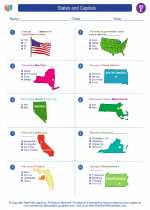Transportation
Transportation is the movement of people, animals, and goods from one place to another. It is an essential part of our daily lives and has a significant impact on the development of societies and economies.
Types of Transportation
There are several modes of transportation, including:
- Road transportation: This includes cars, buses, motorcycles, and bicycles that travel on paved roads.
- Rail transportation: Trains and trams that run on railway tracks.
- Water transportation: Ships, boats, and ferries that travel on water bodies such as oceans, rivers, and lakes.
- Air transportation: Airplanes and helicopters that fly in the sky.
- Pipeline transportation: This mode is used for transporting liquids and gases through pipelines.
Importance of Transportation
Transportation plays a crucial role in the following ways:
- It allows people to commute to work, school, and other places.
- It facilitates the movement of goods and raw materials, supporting trade and economic development.
- It connects remote areas to urban centers, improving access to essential services such as healthcare and education.
- It enables tourism and travel, promoting cultural exchange and generating revenue for destinations.
- It contributes to the overall development of infrastructure and urban planning.
Study Guide
Here are some key points to remember when studying transportation:
- What are the different modes of transportation?
- How does transportation impact economic development?
- Explain the importance of efficient transportation systems in urban areas.
- Discuss the environmental impact of different modes of transportation.
- Research and present a case study on a major transportation project or infrastructure development.
Understanding transportation is essential for comprehending how societies and economies function. It is also important to consider the environmental and social consequences of transportation systems and explore ways to make them more sustainable and efficient.
[Transportation] Related Worksheets and Study Guides:
.◂Social Studies Worksheets and Study Guides Fifth Grade. States and Capitals
Study Guide States and Capitals
States and Capitals  Worksheet/Answer key
Worksheet/Answer key States and Capitals
States and Capitals  Worksheet/Answer key
Worksheet/Answer key States and Capitals
States and Capitals  Worksheet/Answer key
Worksheet/Answer key States and Capitals
States and Capitals 

 Worksheet/Answer key
Worksheet/Answer key
 Worksheet/Answer key
Worksheet/Answer key
 Worksheet/Answer key
Worksheet/Answer key

The resources above cover the following skills:
Geography: A student should be able to utilize, analyze, and explain information about the human and physical features of places and regions. A student who meets the content standard should:
Understand that a region is a distinct area defined by one or more cultural or physical features.